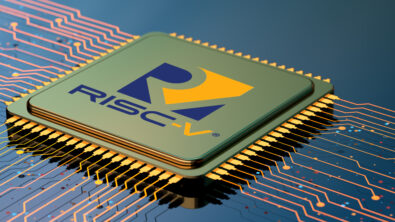Brillo – a brilliant OS or a scouring pad?
Computers have had operating systems almost since the beginning – 60 years or so anyway. Embedded systems are a bit newer, of course, and it was the early 1980s when the first OS products appeared. Naturally, they were real time operating systems [RTOSes], as this matched the needs of the systems being built, as it often does today. The first commercially available RTOS was [probably] VRTX [pronounced “vertex”], which was developed by a company called Hunter & Ready, which became Ready Systems. They were acquired by Microtec Research, where I was working at the time. We got acquired by Mentor Graphics, where I still am today. VRTX was mothballed a few years ago and we moved on to selling the Nucleus RTOS after the acquisition of Accelerated Technology.
The RTOS market has always been interesting, with lots of options. There are around 200 products on the market, but still there are more companies trying to get in on the act …
RTOSes developed in various ways and other classes of systems created different demands. Such systems did not have stringent real time response requirements, but did need a wide range of device support and connectivity options. This resulted in embedded versions of Linux becoming available – like our own Mentor Embedded Linux, for example. Google developed Android [actually they acquired a company that had done the initial development] which was initially deployed in mobile phones, but was always destined for wider application. Android has Linux at its core. It was never intended for real time systems and did not pretend to be.
We are now in the the world of the Internet of Things [IoT], which is mostly an evolutionary phenomenon that brings together a lot of existing technology. It is also a bandwagon onto which just about every company involved with embedded systems has joyfully jumped. Despite the wide range of RTOSes on the market, many of which have very wide choices of connectivity [I have to cite Nucleus again], which is a key requirement, several companies have announced operating systems aimed specifically at IoT.
Samsung touted Tizen as a good option – perhaps the “standard” for smart TVs – but they are actually big users/deployers of Nucleus. ARM® have announced their mbed™ OS [which is not an RTOS]. And now Google have announced Brillo.
After their acquisition of Nest, Google’s move into smaller systems is unsurprising. However, I find the description of Brillo as being a stripped down Android a little perplexing. At the core of Android is Linux, which, although it can be stripped down, never comes close to the memory footprint of some of the classic RTOS products. So, how can Brillo be targeted at devices with very small memories? I guess only time will tell, as we learn more about the OS … tweet this
![]()
![]()
![]()
![]()
![]()
![]()
Comments
Leave a Reply
You must be logged in to post a comment.



Hey there, I think yoiur website might be having browser compatibilkity issues.
When I look at your website in Opera, it looks fine
but when opening in Internet Explorer, it has some overlapping.
I jut wanted to ive you a quick heads up!
Oher then that, terrific blog!
Feel free tto surf to my website: JASON Natural Products – Tooth Gel Sea Fresh All Natural Strengthening Anti-Cavity CoQ10 with Fluoride Deep Sea Spearmint – 6 oz.